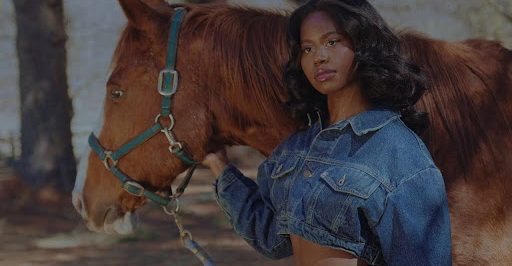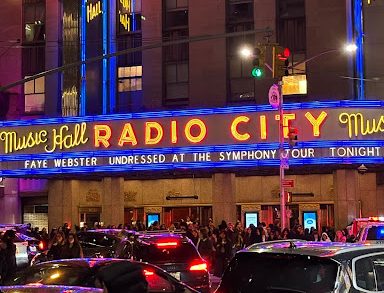
In glorious cinematic chaos, “Moonage Daydream” illustrates the artistic evolution of rock pioneer David Bowie. The musical montage focuses on three stages of Bowie’s discography: beginning during the early 1970s Ziggy Stardust era, followed by Bowie’s tenure in Germany working on compilation album, “The Berlin Trilogy” and arcs during his 1980s dance rock period.
Rather than conforming to a standard chronology, the film instead bounces from hotel rooms to limousines to recording studios. The film assembles vintage footage of Bowie, inter cut with Sci-Fi snippets, cultural soundbites, kaleidoscopic visual effects and most memorably, intimate audio of the virtuouso’s voice steeped in introspection.
Emerging from stage darkness, a man with striking cheekbones and alluring presence performs for the entranced audience. The concert is overlaid with an unconventional deep cut, 1995’s “Hallo Spaceboy,” which is revisited several times over and remixed with other tracks. Bowie’s stage persona Ziggy was a hybrid of rockstar and alien, a sci-fi sketch with an equally stunning voice in 3D. The film shows Ziggy on stage performing as well as preceding the concert in the process of hair and makeup.
The radical notion of a man wearing cosmetics publicly was revolutionary. “Moonage Daydream” director Brett Morgen emphasizes the influence of Ziggy on the 1970s generation, who embraced his approach to androgynous style. Bowie created his original character by piecing together cowboy boots and leather jackets with false eyelashes and neon hair colors, and listeners felt liberated to do the same. Bowie broke the boundaries of convention and birthed his own.
Fizzling in and out of focus in vibrant tessellations, Bowie takes care of the daily routine. He faces himself in the mirror applying elaborate stage makeup, and then striking the electric guitar onstage circa 1983 garbed in neon tuxedos and a less youthful, 21st-century circa Bowie, bare-faced and performing an interpretive dance. Bowie reveals a close relationship with his older brother Terry that initiated his musical interest. By exposing him to classic jazz records, he left an indelible mark on an adolescent Bowie. Unfortunately, Terry returned home to post-war Brixton exhibiting signs of psychiatric illness, and Bowie painfully recalls being extremely affected by his brother’s condition. The steady pulse of the film, in the absence of a typical chronology, is his resonant and thoughtful candor.
Dreamy clips of Bowie’s martian-filled moonscapes appear sporadically, expressing his life-long infatuation with the galaxy. Bowie absolutely excelled in visual performance, exuding a kind of theater arts student charm, and the film includes behind the scenes footage of him acting and directing works of his own. Bowie’s archives transport the audience half a century back in time, finding him sprawled on the floor of a studio immersed in his work, filling notebooks with a sketch of his next celestial costume, or listing ideas for a screenplay.
Even fans well-versed in Bowie’s records will discover new chartered record territory. A scarcely recorded duo performance with rock guitarist Jeff Beck, segments of 1974’s nostalgic “Soul Tour” accompanied by unreleased live covers of “The Jean Jeanie” and the Beatles’ “Love Me Do” are brought to light. Bowie’s directorial debuts that have become cult favorites, among them horror picture “The Hunger” and sci-fi feature, “The Man Who Fell to Earth” are included in the film. Like slides on a projector, the scenes flip through Bowie’s endless stream of videography. Viewers might conclude he created art and music in his sleep to acquire such a robust body of work, literally spanning the length of a lifetime. Moonage shows him in mid-process, producing a gallery of postmodern artwork and a healthy cache of feature films, in addition to “Ziggy Stardust,” “The Berlin Trilogy” and “Let’s Dance.”
The musical documentary doesn’t subscribe to a sequence, instead it is stylized as an arthouse monument of his career. The absence of structure was effective in expressing Bowie’s cosmic, cartoonish essence, conveying the feeling of perpetual creation. David Bowie’s inspiration lives on through his renaissance of self-identified creativity, along with his ability to craft a tune loved by the masses. “Moonage Daydream” gives fans a glimpse of Ziggy’s ‘favorite form of worship’ — life.







